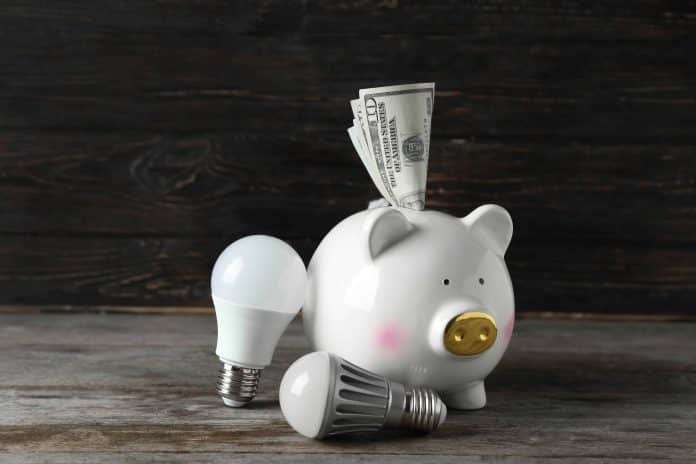
Are you seeking new ways to save money on your electric bill? With the general rise in energy prices across most of the world, it is easy to feel helpless when dealing with ongoing expenses. However, there are multiple ways to minimize your energy consumption, save money, and benefit the environment all at the same time.
According to the US Energy Information Administration, fossil fuels are the most popular source of energy utilized for power generation. When these fossil fuels are burned, greenhouse gasses such as carbon dioxide are released into the atmosphere, trapping heat and contributing to global warming.
In this article, we will walk you through 2 major ways to reduce your energy expenses as much as possible.
Low Income Home Energy Assistance Program (LIHEAP)
Through efforts that help families with energy bills, the Low Income Home Energy Assistance Program (LIHEAP) helps keep families safe and healthy. LIHEAP offers federally sponsored assistance in controlling the costs of home energy bills, energy crises, weatherization, and minor energy-related home repairs.
LIHEAP can help you stay warm in the winter and cool in the summer by providing programs that lower the risk of health and safety issues caused by unsafe heating and cooling practices.
Who is Eligible for This Program?
If your state, territory, or tribe provides LIHEAP locally, you may apply for it in case you meet the following requirements:
- You have to be in need of help paying your home energy costs (of course!).
- Your family’s annual income (before taxes) must be lower than the maximum income level that your state determines for each family size.
- You may automatically qualify for LIHEAP if at least one member of your family is receiving benefits from any of the programs below:
- Supplemental Nutrition Assistance Program (SNAP)
- Supplemental Security Income (SSI)
- Temporary Assistance for Needy Families (TANF)
- Specific Veterans programs
If you are interested in this program and wish to apply for it, make sure to contact your local agency. You may find it HERE.
Weatherization Assistance Program (WAP)
The US Department of Energy’s (DOE) Weatherization Assistance Program (WAP) reduces energy costs for low-income households. It works by increasing the energy efficiency of your house while simultaneously protecting your health and safety.
The program, which is funded by the DOE, provides weatherization services to almost 35,000 homes each year. A national assessment of the program found that these households save an average of $283 or more per year through weatherization renovations and upgrades.
Who is Eligible for WAP?
To be eligible for this benefit program, first, you must be a resident of the state where you apply. Also, you have to be in need of assistance with home energy bills. States assign priority to:
- The elderly over 60 years of age.
- Households with children (in most states).
- Families that have one or more members suffering from a disability.
Weatherization services will be immediately available for you if you receive Supplemental Security Income or Aid to Families with Dependent Children benefits.
Tips to Save Money on Your Energy Bill
It is time to focus on your monthly savings rather than your energy bill. Check out these easy ways to save money on your electricity bills while staying cool this summer.
Run an Energy Audit
The word “audit” should not intimidate you. This is the first stop on your journey to lower your electric bill. An audit basically involves going through and assessing your home’s energy usage. For the best energy results, you might need to hire an expert from your electricity provider. Do you know what the best part is? Many power companies offer this service for free!
Now, what exactly happens during this audit? You can anticipate the specialists to ask about your objectives and any concerns you may have. They will perform tests, inspect your home for air leaks, and check the insulation quality. They will then give you their best advice on how to fix any major issues.
Turn Off the Lights Whenever You Are Not in the Room
Leaving lights on when they are not in use wastes both electricity and money. A 40-watt light bulb consumes 0.04 kWh of energy each hour of operation. Assume your utility company charges 10 cents per kWh of electricity. This indicates that for every hour the light is switched off, you will save $0.004.
That may not seem like much saving, but if you turn off just five lights in your house for 10 hours a day, you will immediately save $6 on your electricity bill. In short, the more lights you turn off (and the higher the wattage), the more money you save on your utility bill!
Therefore, make it a habit to simply turn on the light only in the room you are currently in. Also, if it is sunny outside, take advantage of the natural light. It is not only visually appealing, but it is also free!
Use a Different Type of Lightbulbs
According to the US Department of Energy, installing energy-efficient lighting is one of the quickest ways to lower your energy bills. Lighting accounts for 15% of a home’s electricity consumption, but the type of light bulb you use can affect how much money you spend and how much carbon dioxide you produce. The U.K. Energy Saving Trust affirms that replacing all of the bulbs in a home with LED lights can save carbon dioxide emissions by approximately 88 lbs each year.
Incandescent light bulbs, which have been in use for nearly a century, barely convert 5% of the electricity they consume into visible light. Compact fluorescent lamps (CFLs) were the first energy-efficient bulbs to be made available for purchase. These bulbs last ten times longer and use up to 80% less energy than regular bulbs. Light-emitting diodes (LEDs) are even more efficient, displaying full brightness as soon as they are turned on.
Fill Up Your Appliances
We are talking about appliances like your dishwasher, washing machine, and dryer. Running your washing machine for a few pieces of clothing is one of the most common ways to waste money.
Regardless of load size, your washer will use almost the same amount of electricity, so fill it up. When it comes to laundry, there are two simple ways to save energy: use less water (fewer loads) and use cold or warm water. You should apply the same rules to the dishwasher.
Avoid using the dryer for anything other than a full load. Also, stop over drying the clothes, and try to dry comparable items together. Nothing is more annoying than spending two hours drying towels and T-shirts only to realize that your towels are nowhere near dry. Use the automated cycle instead of any timed settings to guarantee that the moisture sensors do their job.
If you want to take it a step further, this handy home energy use calculator can help you calculate how much your appliances are costing you. If you really want to save money on your electric bill, try not to use the dryer at all and instead dry your clothing on the line. Sometimes you just have to get back to the basics.
Install Insulation In Your Home
By implementing a few strategies to prevent heat from escaping, you can keep your home warmer for longer and save money on your heating bills. According to the Energy Saving Trust, one-third of the heat from an uninsulated home is lost via its walls, while 25% is lost through the roof.
Draught-proofing your home is one of the most effective ways to reduce energy expenses by fixing cracks, gaps, and holes in windows and doors that allow heat to escape.
If water tanks and pipelines are not properly insulated, heat can quickly escape. If you buy a better-insulated water tank, it will stay hotter for longer, which means it will need to be reheated less frequently, saving you money on utility expenses.
Adjust the Water Heater’s Temperature
The majority of people never bother to check to see if their water is too hot. You turn on the tap, warm water streams out, and you go about your business. However, if your water temperature is set too high, you could be losing $36–61 per year.
Setting the water heater to 140 degrees should be sufficient. But keep in mind that it may occasionally give scalding hot water. Setting it too low, say, to 120 degrees, may interfere with your dishwasher’s bacteria-killing ability. The best way to see what works for you is by trying out different temperature settings.
Change the Air Filter in Your HVAC System
We understand how annoying it is to have to replace these items throughout the year. Guess what, though? It is a simple tweak that may increase the life and efficiency of your HVAC system, and save you money in the long term. So, take the plunge and remember to change the air filter every three months—you will be glad you did.
Use a Regular Fan
Do you want to make even more savings? In hot weather, instead of running the air conditioner constantly, use a fan. A ceiling fan, according to the US Natural Resource Defense Council, may make a room feel 10 degrees cooler while consuming only 10% of the energy that a central air conditioner does.
Adjust Your Fridge’s Settings
This is yet another example of a tiny change having a significant impact. Check the settings on your refrigerator. As a basic rule, keep your fridge around 35–38 °F. Adjusting the settings in this manner will keep your food fresh while also preventing your unit from wasting energy by working overtime to keep food cool.
Ask About Special Deals And Discounts
Is it not true that we all appreciate a good deal? So, check with your local utility company to see if there are any special discounts available. Unless you ask, you will never know.
If you go paperless, certain companies may offer you a discount. Others may provide rebates if you make energy-saving improvements to your home. Moreover, by subscribing to newsletters, you will receive tips and tricks to help you save even more.
In Conclusion
Americans already have a lot of bills to deal with; the energy bill is one of them. It is vital for your budget to keep your bills under control. Fortunately, there are numerous ways to save money on your energy bills. Try a couple of the above-mentioned energy-saving tips to see how much money you may save. Also, consider applying for LIHEAP if you feel like you really need help with your utility bill.
References:
- 10 energy-reducing life hacks: How to save on electricity bills and more | Live Science
- 50 Super Simple Ways to Save on Energy Costs | Family Handyman
- How to Save Money on Your Electric Bill | RamseySolutions.com
- LIHEAP Service Eligibility Guidelines | The Administration for Children and Families
- Low Income Home Energy Assistance Program (LIHEAP) | The Administration for Children and Families
- Weatherization Assistance Program for Low-Income Persons | Benefits.gov
- Weatherization Assistance Program | Department of Energy


















